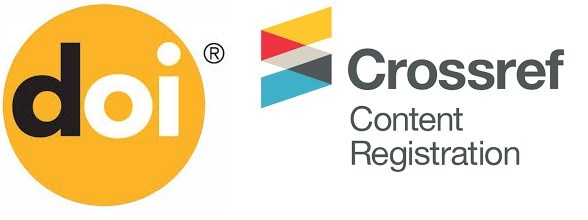Alfabetización y razonamiento estadístico de estudiantes mexicanos al concluir el bachillerato
DOI:
https://doi.org/10.46219/rechiem.v14i3.101Palavras-chave:
Estadística, Razonamiento estadístico, Alfabetización estadística, Taxonomía SOLO, BachilleratoResumo
En este artículo reportamos resultados de una investigación con estudiantes mexicanos sobre los niveles de alfabetización y razonamiento estadístico que han desarrollado en su educación básica y media superior, utilizando la taxonomía SOLO (Structure of Observed Learning Outcomes). El instrumento utilizado es un cuestionario aplicado en línea que se ha adaptado de diversos ítems de la literatura y algunos de elaboración propia. Los resultados señalan que los estudiantes tienen bajos niveles de alfabetización y razonamiento estadístico en representaciones gráficas y medidas descriptivas, a pesar de que son temas del currículo desde la educación primaria; los resultados son más bajos aún en ítems de correlación, diagramas de caja, deciles y probabilidad.
Downloads
Referências
Allen, K. (2006). The statistics concept inventory: development and analysis of a cognitive assessment instrument in statistics [Tesis doctoral, University of Oklahoma]. UMI Microform. http://dx.doi.org/10.2139/ssrn.2130143
Australian Curriculum (2018, 26 de octubre). National Numeracy Learning Progression. Australian Curriculum, Assessment and Reporting Authority (ACARA). https://www.australiancurriculum.edu.au/resources/national-literacy-and-numeracy-learning-progressions/national-numeracy-learning-progression/statistics-and-probability/?subElementId=50841&scaleId=0
Batanero, C., Díaz, C., Contreras, J., y Roa, R. (2013). El sentido estadístico y su desarrollo. Números: Revista de Didáctica de las Matemáticas, 83, 7-18. http://funes.uniandes.edu.co/3651/
Biggs, J., y Collis, K. (1982). Evaluating the quality of learning: The SOLO taxonomy. Academic Press. https://doi.org/10.1016/C2013-0-10375-3
Callingham, R., y Watson, J. (2017). The development of statistical literacy at school. Statistics Education Research Journal, 16(1), 181-201. https://doi.org/10.52041/serj.v16i1.223
delMas, R., Garfield, J., Ooms, A., y Chance, B. (2007). Assessing students’ conceptual understanding after a first course in statistics. Statistics Education Research Journal, 6(2), 28-58. https://doi.org/10.52041/serj.v6i2.483
Estrella, S., Olfos, R., y Mena-Lorca, A. (2015). El conocimiento pedagógico del contenido de estadística en profesores de primaria. Educação e Pesquisa, 41(02), 477-493. https://doi.org/10.1590/S1517-97022015041858
Frost, R., Armstrong, B., y Christiansen, M. (2019). Statistical learning research: A critical review and possible new directions. Psychological Bulletin, 145(12), 1128-1153. http://dx.doi.org/10.1037/bul0000210
Gal, I. (2002). Adults' Statistical Literacy: Meanings, Components, Responsibilities. International Statistical Review, 70(1), 1-5. https://doi.org/10.2307/1403713
Galesic, M., y García-Retamero, R. (2010). Statistical numeracy for health: A cross-cultural comparison with probabilistic national samples. Archives of Internal Medicine, 170(5), 462-468. https://doi.org/10.1001/archinternmed.2009.481
Garfield, J. (1998). The statistical reasoning assessment: Development and validation of a research tool. En L. Pereira-Mendoza (Ed.), Proceedings of the Fifth International Conference on Teaching Statistics (pp. 781-786). The Netherlands: International Statistical Institute. http://citeseerx.ist.psu.edu/viewdoc/summary?doi=10.1.1.219.5316
Garfield, J. (2002). The challenge of developing Statistical Reasoning. Journal of Statistics Education, 10(3). https://doi.org/10.1080/10691898.2002.11910676
Garfield, J. (2003). Assessing Statistical Reasoning. Statistics Education Research Journal, 2(1), 22-38. https://doi.org/10.52041/serj.v2i1.557
Garfield, J., y Ben-Zvi, D. (2008). Developing Students’ Statistical Reasoning: Connecting Research and Teaching Practice. Springer. https://doi.org/10.1007/978-1-4020-8383-9
Inzunza, S. (2015). Niveles de interpretación que muestran estudiantes sobre gráficas para comunicar información de contextos económicos y sociodemográficos. Revista Mexicana de Investigación Educativa, 20(65), 529-555. https://www.redalyc.org/articulo.oa?id=14035408010
Inzunza, S., y Rocha, E. (2021). Los datos y el azar en el currículo de educación básica y bachillerato en México: reflexiones desde la perspectiva internacional. Diálogos sobre Educación: temas actuales en investigación educativa, 12(23), 1-13. https://doi.org/10.32870/dse.v0i22.717
Jacobbe T., Case, C., Whitaker, D., y Foti, S. (2014, 13 al 18 de julio). The LOCUS assessment at the college level: conceptual understanding in introductory statistics [Conferencia]. 9th International Conference on Teaching Statistics, Flagstaff, Arizona. https://icots.info/9/proceedings/pdfs/ICOTS9_3C3_WHITAKER.pdf
Johannssen, A., Chukhrova, N., Schmal, F., y Stabenow, K. (2021). Statistical Literacy-Misuse of Statistics and Its Consequences. Journal of Statistics and Data Science Education, 29(1), 54-62. https://doi.org/10.1080/10691898.2020.1860727
Juárez, A., y Inzunza, S. (2014). Comprensión y razonamiento de profesores de Matemáticas de bachillerato sobre conceptos estadísticos básicos. Perfiles Educativos, 36(146), 13-29. http://www.iisue.unam.mx/perfiles/articulo/2014-146-comprension-y-razonamiento-de-profesores-de-matematicas-de-bachillerato-sobre-conceptos-estadisticos-basicos.pdf
Kahneman, D., Slovic, P., y Tversky, A. (1982). Judgment under uncertainty: heuristics and biases. Cambridge University. https://doi.org/10.1017/CBO9780511809477
Konold, C. (1989). Informal Conceptions of Probability. Cognition and Instruction, 6, 59-98. https://doi.org/10.1207/s1532690xci0601_3
Lecoutre, M. (1992). Cognitive models and problem spaces in purely random situations. Educational Studies in Mathematics, 23(6), 557-568. https://doi.org/10.1007/BF00540060
Mayen, S., Cobo, B., Batanero, C., y Balderas, P. (2007). Comprensión de las medidas de posición central en estudiantes mexicanos de bachillerato. Revista Iberoamericana de Educación Matemática, 9, 187-201. http://funes.uniandes.edu.co/14650/
Ministry of Education New Zealand. (2014, 3 de abril) What is the mathematics and statistics? The New Zealand Curriculum Online. https://nzcurriculum.tki.org.nz/The-New-Zealand-Curriculum/Mathematics-and-statistics/What-is-mathematics-and-statistics
Molina, E., Contreras, J., Salcedo, A., y Contreras, J. M. (2020). Evaluación de la posturcrítica de futuros profesores de Educación Primaria como componente de la cultura estadística. Educación Matemática, 32(3), 97-120. https://doi.org/10.24844/em3203.04
Naya, S., Ríos, M., y Zapata, L. (2012). La estadística en la enseñanza preuniversitaria. La Gaceta de la RSME, 15(2), 355-368. https://dialnet.unirioja.es/servlet/articulo?codigo=3952887
Pedhazur, E., y Pedhazur, L. (1991). Measurement, design, and analysis. Lawrence Erlbaum Associates. https://doi.org/10.4324/9780203726389
Porkess, R. (2011). The future of statistics in our schools and colleges. Royal Statistical Society. https://rss.org.uk/RSS/media/News-and-publications/Publications/Reports%20and%20guides/rss-reports-future-statistics-schools-colleges-roger-porkess-2012.pdf
Ridgway, J. (2016). Implications of the Data Revolution for Statistics Education. International Statistical Review, 84(3), 528-549. https://doi.org/10.1111/insr.12110
Rodríguez, F. (2017). Alfabetización Estadística en Profesores de Distintos Niveles Formativos. Revista Educação e Realidade, 42(4), 1459-1477. https://doi.org/10.1590/2175-623662610
Rumsey, D. (2002). Statistical Literacy as a Goal for Introductory Statistics Courses. Journal of Statistics Education, 10(3). https://doi.org/10.1080/10691898.2002.11910678
Sabbag, A. (2016). Examining the relationship between statistical literacy and statistical reasoning [Tesis doctoral, University of Minnesota]. ProQuest. https://www.proquest.com/openview/1a1181f6a728abbfcfd147ba730b4048/1?pq-origsite=gscholar&cbl=18750
Sabbag, A., y Zieffler, A. (2015). Assessing learning outcomes: an analysis of the GOALS-2 instrument. Statistics Education Research Journal, 14(2), 93-116. https://doi.org/10.52041/serj.v14i2.263
Saffran, J., y Kirkham, N. (2018). Infant statistical learning. Annual review of psychology, 69, 181-203. https://doi.org/10.1146/annurev-psych-122216-011805
Sharma, S. (2017). Definitions and models of statistical literacy: a literature review. Open Review of Educational Research, 4(1), 118-133. https://doi.org/10.1080/23265507.2017.1354313
Shaughnessy, M., Chance, B., y Henry, M. (2009). Focus in High School Mathematics: Statistics and Probability. NCTM.
Steen, L. (2002). The case for quantitative literacy. En L. A. Steen (Ed.), Mathematics and Democracy: The Case for Quantitative Literacy (pp. 1-22). NCED. https://www.commoncorediva.com/wp-content/uploads/2016/10/8952_mathanddemocracy2.pdf
Tishkovskaya, S., y Lancaster, G. (2012). Statistical education in the 21st century: A review of challenges, teaching innovations and strategies for reform. Journal of Statistics Education, 20(2), 1-24. https://doi.org/10.1080/10691898.2012.11889641
Wallman, K. (1993). Enhancing Statistical Literacy: Enriching Our Society. Journal of the American Statistical Association, 88(421), 1-8. https://doi.org/10.1080/01621459.1993.10594283
Watson, J. (2006). Statistical literacy at school: Growth and goals. Lawrence Erlbaum. https://doi.org/10.4324/9780203053898
Watson, J., y Callingham, R. (2003). Statistical literacy: A complex hierarchical construct. Statistics Education Research Journal, 2(2) 3-46. https://doi.org/10.52041/serj.v2i2.553
Weiland, T. (2017). Problematizing statistical literacy: An intersection of critical and statistical literacies. Educational Studies in Mathematics, 96, 33-47. https://doi.org/10.1007/s10649-017-9764-5
Whitaker, D., Foti, S., y Jacobbe, T. (2015). The Levels of Conceptual Understanding in Statistics (LOCUS) Project: Results of the Pilot Study. Numeracy: Advancing education in quantitative literacy, 8(2). http://dx.doi.org/10.5038/1936-4660.8.2.3
Zapata, L. (2016). Enseñanza de la estadística desde una perspectiva crítica. Yupana Revista de Educación Matemática de la UNL, 10, 30-41. https://doi.org/10.14409/yu.v0i10.7695
Ziegler, L. (2014). Reconceptualizing statistical literacy: Developing an assessment for the modern introductory statistics course [Tesis doctoral, University of Minnesota]. http://iase-web.org/documents/dissertations/14.LauraZiegler.Dissertation.pdf
Downloads
Publicado
Como Citar
Edição
Seção
Licença
Copyright (c) 2022 Revista Chilena de Educación Matemática

Este trabalho está licenciado sob uma licença Creative Commons Attribution 4.0 International License.











